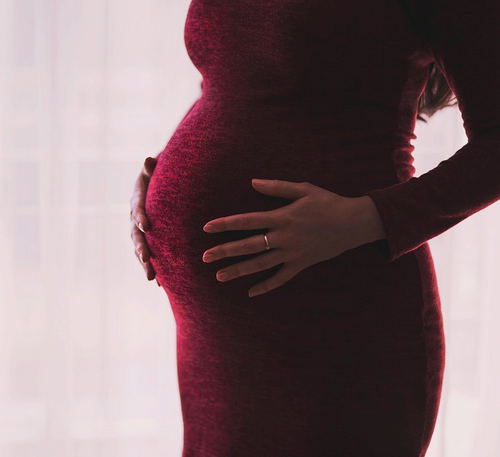Caesarean section is a common surgical procedure. According to statistics for 2008 in Russia, out of every thousand births, 197 ended using this procedure. Like any other surgical operation, cesarean section affects the state of the body and, especially, the reproductive system of patients.
Many women are interested in issues related to this. The main one is how soon menstruation will resume after cesarean section.
In general, for the onset of menstruation, it is not so important how the birth occurred – either naturally or with the help of a cesarean section. It is worth noting that the first periods after cesarean section begin in different ways.
The body of each woman is unique, and if you follow the principles of a healthy lifestyle and under the supervision of a doctor, even weakened by cesarean section, he will soon return to normal.
Features of the recovery of the body after cesarean section
The problem of the onset of menstruation worries the fair sex, who have undergone this operation and do not have special knowledge in the field of gynecology, quite often. Since during the procedure there is a direct effect (incision) on the uterus, it is assumed that the entire system of internal genital organs will experience this effect on itself.
There can be no universal date when menstruation goes after cesarean section. As, however, in the case of natural delivery.
To describe the processes occurring with the body of a young mother, there is a special term – involution (lat. Involutio – “coagulation”) of the uterus. It indicates the return of female reproductive organs to the normal state in which they were before pregnancy. If an ordinary uterus weighs on average less than 100 grams and has a volume of 5 milliliters, then after giving birth its parameters are as follows: weight is about 1 kg, volume is about 5 liters. Regardless of how the birth was resolved, the body needs to return to the previous state of pregnancy and restore its functions. It is believed that this period takes about one and a half months.

It is necessary to understand at the same time that individual characteristics of each young mother play the greatest value here. In one woman in labor, menstruation can begin a month after a cesarean section, and the other takes more time to involution of her reproductive system. This applies to both the restoration of the natural functions of the ovaries and uterus, and the reaction to surgery – each body responds in its own way to the medical effect and has its own timing for certain processes.
Lochia after cesarean section
Despite the fact that before the minute when menstruation begins after cesarean section is still far away, women have discharge. In medicine, they are called “lochia” (from the Greek word “lochios” – referring to childbirth, generic). Immediately after the release of the afterbirth, the uterus begins to sink and contract in size. There is no longer any place for the remains of dead fetal membranes, fragments of her own mucous membranes. On the first day after the birth of the baby, these secretions are abundant, contain clots and blood due to surgical incision and healing of the uterus. Gradually, its concentration in the secretions will decrease, and the secretions themselves will change color, texture and smell, by the end of the involution becoming white. By the onset of the first menstruation, lochia ceases.
When do the first periods after cesarean begin and how long
In the absence of any deviations or diseases, the menstrual cycle resumes and, as many note, improves. That is, if before pregnancy, women complained of pulling sensations and pain on the first day of menstruation, an unpredictable cycle or intense discharge, then after the birth of a child, menstruation normalizes, and these unpleasant manifestations disappear.
Most often, the first menstrual periods after cesarean section differ from previous and subsequent ones in significant intensity. The hormonal system of a woman has just returned to normal, and she still needs to adjust her work. This occurs within one to two cycles, then the amount of discharge should be reduced. The duration of menstruation can fluctuate for another three to four months, this is also not a cause for concern. In this case, it is important to ensure that the menstrual cycle itself is from 21 to 35 days. How many menstruation goes after cesarean section – the subject is purely individual, but the period of “critical days” should not be shorter than 3 days and exceed 7 days.
If the cycle of menstruation and the menstruation itself are knocked out of the norm, then this is a significant reason to consult a doctor.
This should be done as soon as possible in such cases as:
- for more than three months, menstruation does not appear after cesarean section during breastfeeding;
- six months after surgery, the cycle was not established;
- too plentiful periods after cesarean section or vice versa too modest;
- the discharge has a strong repulsive odor (may indicate an infection). This symptom is especially significant if it is accompanied by an increase in body temperature and pains in the lower abdomen;
- before and after menstruation, dirty discharge is observed;
- an unexpected cessation of lochia, which may indicate a bend of the uterus, which prevents the exit of the remnants of the placenta to the outside.
Recovery of the female body after cesarean section
The first cycles after cesarean section, when menstruation comes, can be anovulatory, i.e. menstruation precedes ovulation, respectively, pregnancy in this period is impossible. This is due to the fact that in some women ovulation begins only 70-90 days after delivery, while menstruation comes earlier. However, this phenomenon is not typical for everyone, so you should not rely on it as a means of contraception.
Moreover, since our conversation is about Caesarean section, we need to be more careful about protection. Regardless of what period after a cesarean section, planning a pregnancy at this time is strongly not recommended. For more reliable healing and regeneration of uterine tissues, one should wait a while and be protected for 2-3 years with quality proven methods.
In addition to the individual physiological characteristics of the body, the following factors affect the rate of renewal of female reproductive function:
- General health and age of a young mother. Of course, a healthy young body can tolerate various effects more easily and quickly returns to its natural state.
- The presence of pathologies or complications during pregnancy.
- What kind of birth does a woman have? Numerous births weaken the body, causing it to spend more time restoring its functions.
- Diet, exercise, a balanced combination of sleep, activity and relaxation can have a healing effect on the regeneration of body cells and accelerate the resumption of menstruation.
- The psychological state and mood of the woman in childbirth. According to numerous studies, stress and anxiety only harm health and inhibit healing processes. Maintaining a good mood will be useful for both the baby and the mother’s body.
- The presence or failure of lactation. Breastfeeding has a significant effect on menstruation after cesarean section due to the action of the hormone prolactin. This substance provides intensive milk production in the breast of a young mother, but inhibits ovarian function, thereby delaying the onset of ovulation. In addition, the production of estrogen, a hormone responsible for preparing for ovulation, is reduced in a nursing mother. Therefore, the longer a woman breastfeeds an infant, the longer periods may not come.
Tips & Tricks
- No matter how the baby was born, a young mother needs to pay attention to her own well-being. A calm and healthy mother will not only take better care of the baby, but she will also recover better and more easily. To do this, you should balance your diet, breathe fresh air, get enough sleep and try not to be nervous.
- Particular caution should be taken with respect to genital hygiene. Aggressive methods (douching, tampons) should be delayed, try not to take a bath due to the risk of infection. It is better to limit yourself to a shower, gentle washing and the use of gaskets.
- It is also necessary to stop the sexual life during the restoration of female organs. Vaginal contact can cause damage and bring the infection into a weakened body.
- It is important after the fetus is removed operatively to strengthen contraceptive measures. You can consult with a gynecologist and apply more reliable methods (for example, an intrauterine device, barrier contraceptives, etc.). This must be done within 2-3 years. Otherwise, a new pregnancy can cause divergence of the suture on the uterus, bleeding and other dangerous consequences.
- A visit to a gynecologist should not be neglected. During routine examinations, once every one and a half to two months, the doctor will be able to assess how the reproductive system of the young mother is restored and identify possible problems, avoiding deterioration.



